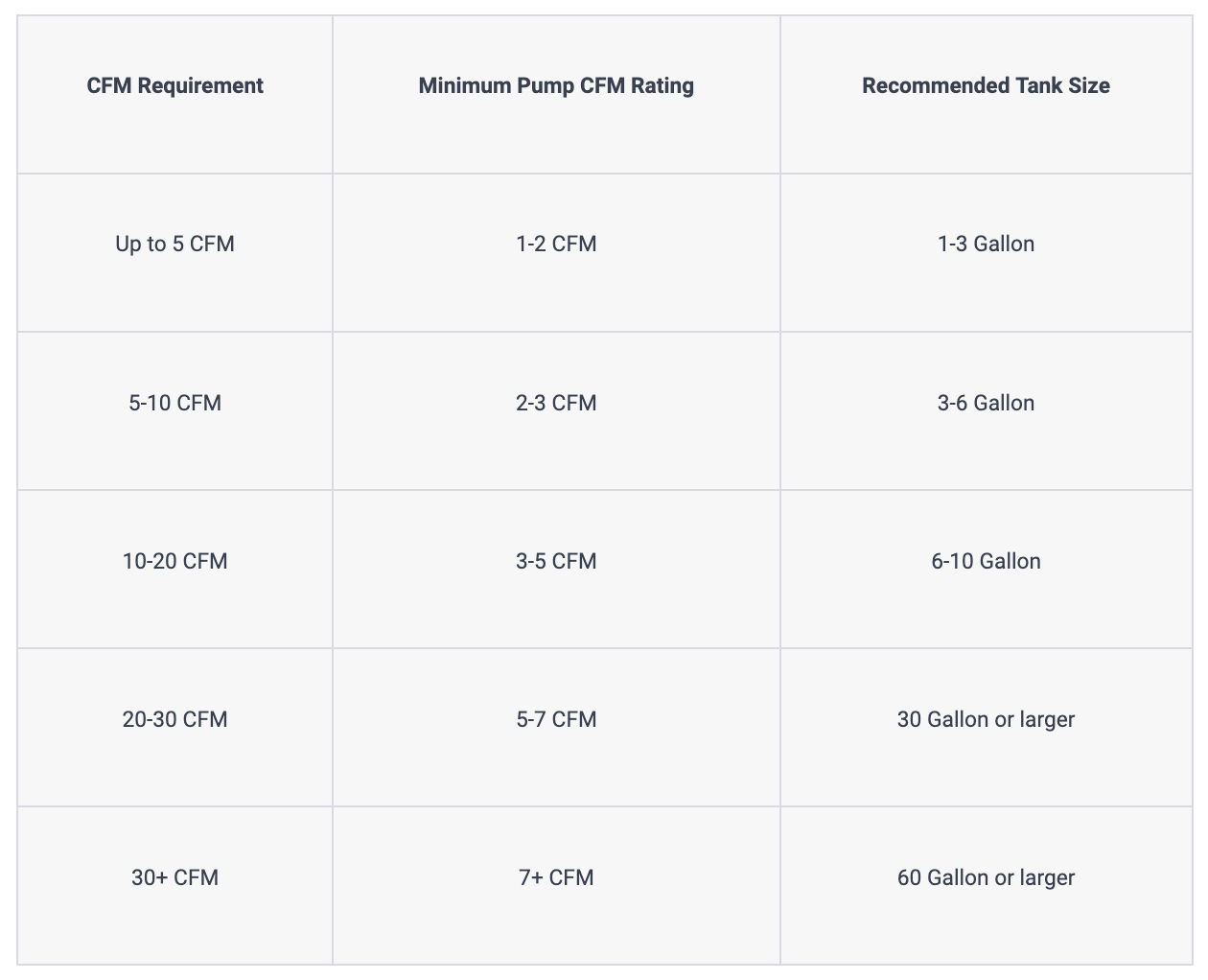How to Choose the Right Air Compressor Pump
If you're in the market for an air compressor pump, you may feel overwhelmed by the various options available. Air compressor pumps come in different sizes, types, and configurations, and selecting the right one for your needs is crucial to ensure efficient and reliable performance. In this blog post, we'll walk you through the key factors to consider when choosing an air compressor pump and provide you with a sizing table to help you make an informed decision.
5 Key Factors to Consider When Buying an Air Compressor Pump
- Cubic Feet per Minute (CFM)
- Pounds per Square Inch (PSI)
- Power Source
- Pump Type
- Tank Size
CFM is a critical factor to consider when selecting an air compressor pump. It refers to the volume of air that the pump can deliver in a minute and determines the performance of your tools or equipment. To determine the required CFM for your application, add up the CFM requirements of all the tools or equipment you plan to use simultaneously and add a 30% buffer for optimal performance.
PSI is the pressure at which the air is delivered by the air compressor pump. It is essential to match the PSI requirements of your tools or equipment to the PSI rating of the pump. If the PSI is too low, your tools may not operate efficiently; while if it's too high, it can damage your tools or equipment.
Air compressor pumps can be powered by various sources, such as electric motors, gas engines, or diesel engines. Consider the availability of the power source, the portability of the pump, and the environment where you will be using it to determine the best power source for your needs. For instance, a home builder or roofer would most likely want a small gas engine-powered air compressor which makes portability a priority, whereas an auto body shop would typically require a stationary, electric motor-driven air compressor, as the application the air compressor is used for is in a static location with various airlines routed throughout the building at the point-of-use (POU).
There are several types of air compressor pumps, including reciprocating, rotary screw, and centrifugal pumps. Each type has its pros and cons in terms of performance, durability, and maintenance requirements. Research each type thoroughly to choose the one that best fits your needs.
The tank size of the air compressor pump determines the amount of air storage capacity it has. A larger tank size can provide a steady supply of compressed air for longer periods, while a smaller tank may require more frequent cycles and may not be suitable for high-demand applications.
To help you determine the appropriate size of air compressor pump for your needs, here's a sizing table based on CFM requirements:
CFM SIZING TABLE

Please note that this table is a general guideline and the actual requirements may vary depending on your specific application and usage patterns.
Choosing the right air compressor pump requires careful consideration of factors such as CFM, PSI, power source, pump type, and tank size. By evaluating your needs and using the sizing table as a reference, you can select an air compressor pump that meets your requirements and ensures efficient and reliable performance for your tools or equipment. Don't hesitate to seek expert advice if you're unsure, as investing in the right air compressor pump can save you time, money, and potential frustrations in the long run. Need parts to repair your air compressor? Visit https://mastertoolrepair.com today!
Recent Posts
-
Mastering Your Compressor: How to Set the Perfect Pressure for Any Job
One of the most frequent questions we hear at Master Tool Repair is: "What pressure should my air co …Jun 6, 2025 -
What Is an Aftercooler and Why Does Your Air Compressor Need One?
If your air compressor is producing hot, moisture-heavy air, you could be putting your tools and equ …May 22, 2025 -
What Is a Compression Ring & Why Does Your Air Compressor Need One?
If your air compressor isn’t holding pressure like it used to, a worn-out compression ring mig …May 8, 2025




